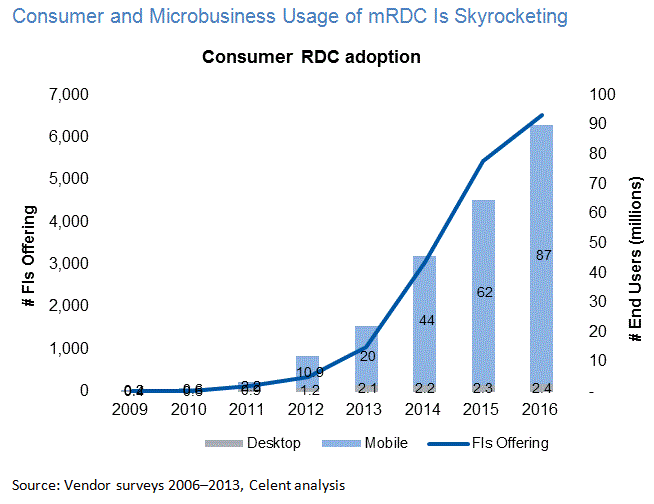State of Remote Deposit Capture 2015: Mobile Is the New Scanner
Abstract
As check usage declines, mobile RDC is becoming the preferred deposit method for a growing number of bank customers. Celent expects RDC to account for a third of retail bank deposits by year-end 2015 and half by 2016.

Mobile RDC is where the action is, according to a new Celent report, State of Remote Deposit Capture 2015: Mobile Is the New Scanner. As RDC becomes a mature market in the US, most distributed capture methods (e.g., branch capture, image ATM, merchant capture) have plateaued. Mobile RDC is the exception. With more than half of mobile banking users enjoying the benefits of mRDC, demand is now growing among small business and commercial users. As this occurs, mRDC will accelerate the decline in branch foot traffic. So much so, Celent expects RDC to account for a third of retail bank deposits by year-end 2015 and half by 2016.

“As check usage continues to decline, mobile RDC will become increasingly relevant — not just for mobile use cases, but more broadly,” says Bob Meara, a senior analyst with Celent’s Banking practice and author of the report. “Mobile RDC is becoming the new scanner, with banks racing to offer mRDC to small business and commercial clients. This will have a profound effect on the branch channel at many institutions as branch visits are replaced with digital deposits.”
The report contains 47 figures and 7 tables.

